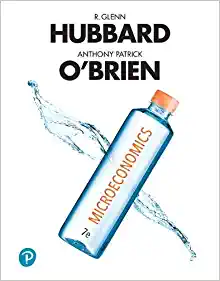Question
A bond has a coupon rate of 8.125%, a maturity of 12.5 years, a face value of $1,000, and makes semiannual payments. If the price
A bond has a coupon rate of 8.125%, a maturity of 12.5 years, a face value of $1,000, and makes semiannual payments. If the price is $934, what is the ANNUAL yield to maturity on the bond?
8.125%
9.016%
4.518%
8.98%
None of the above
[CONCEPT PROBLEM] Assume that all interest rates in the economy decline from 10 percent to 6 percent. Which of the following bonds will experience the HIGHEST PERCENTAGE INCREASE in price?
| A 10-year bond with a 10 percent coupon. | |
| An 8-year bond with a 9 percent coupon. | |
| A 10-year zero coupon bond. | |
| A 1-year bond with a 15 percent coupon. | |
| A 3-year bond with a 10 percent coupon. |
If a warrant is attached to a bond,
| the bondholder has a right, not an obligation, to sell the bonds back to the issuer at a stated price | |||||||||
| the bondholder has a right, not an obligation, to buy the issuing firm's stock at a predefined price | |||||||||
| the issuer has a right to convert the bonds to a predefined number of shares of its stock at a pre-determined date | |||||||||
| the bond holder has a right, not an obligation, to convert his/her bonds into shares of the issuing firm's common stock at a fixed price | |||||||||
| none of the above Call provisions typically require bond issuers to pay investors an amount greater than the par value, called
|
A bond has a coupon rate of 8%, a maturity of 10 years, a face value of $1,000, and makes semiannual payments. If the price is $934.96, what is the annual nominal yield to maturity on the bond?
| 8.39% | |
| 9.64% | |
| 4.41% | |
| 8.98% | |
| None of the above |
Which of the following statements is most correct?
| Junk bonds typically carry a lower yield to maturity than investment grade bonds. | |
| A debenture is a secured bond which is backed by some or all of the firm's fixed assets. | |
| All else equal, subordinated bonds typically carry lower yields than mortgage bonds. | |
| All else equal, convertible bonds are less valuable than straight bonds | |
| None of the above statements is correct. |
A convertible bond gives:
| the bondholder the right, not an obligation, to sell the bonds back to the issuer at a stated price | |
| the bond holder has a right, not an obligation, to buy the issuing firm's stock at a predefined price | |
| the issuer has a right to convert the bonds to a predefined number of shares of its stock at a pre-determined date | |
| the bond holder has a right, not an obligation, to convert his/her bonds into shares of the issuing firm's common stock at a fixed price | |
| none of the above |
For the next 2 question. New York Waste (NYW) is considering refunding a $50,000,000, annual payment, 14.5% coupon, 30-year bond issue that was issued 5 years ago. It has been amortizing $3 million of flotation costs on these bonds over their 30-year life. The company could sell a new issue of 25-year bonds at an annual interest rate of 11.67% in today's market. A call premium of 14% would be required to retire the old bonds, and flotation costs on the new issue would be $3 million. The company's marginal tax rate is 40%. The new bonds would be issued when the old bonds are called.
Calculate the after-tax annual INTEREST SAVINGS if the refunding takes place.
What is the NPV if the bonds are refunded today?
Step by Step Solution
There are 3 Steps involved in it
Step: 1

Get Instant Access to Expert-Tailored Solutions
See step-by-step solutions with expert insights and AI powered tools for academic success
Step: 2

Step: 3

Ace Your Homework with AI
Get the answers you need in no time with our AI-driven, step-by-step assistance
Get Started


